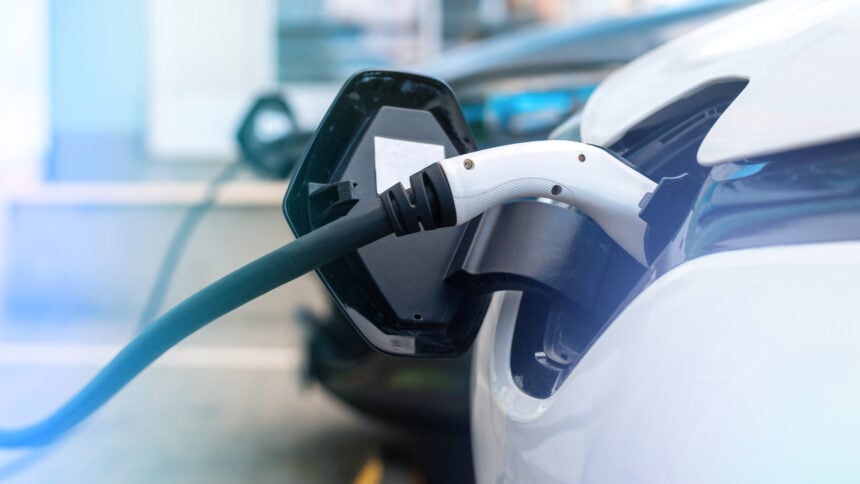EV sticker prices won’t fall by magic — they’ll fall because we stop throwing battery materials away. Meet the breakthrough that makes reuse the economical choice.
The EV Battery Recycling Landscape: Why It’s Been Hard (Until Now)
If you’ve ever wondered why EVs still feel pricey, start with the battery. It’s the single most expensive component in the car, and the metals inside — lithium, nickel, cobalt, manganese — behave like a commodity roller coaster. Historically, end-of-life packs were a headache: heavy, hazardous, and chemically complex. Manufacturers could smelt them (pyrometallurgy) or dissolve them in acids (hydrometallurgy), but quality swings and economics kept true circularity just out of reach.
This is where battery recycling earns its headline. The new wave of processes aims to recover battery-grade material that can go straight back into cathodes — at yields and purities that make CFOs and chemists happy. Think: less mining volatility, more domestic supply, and cheaper cells feeding cheaper cars.
“Lower mining + more recovery = cheaper batteries. Simple math.” — a TikTok user
The Breakthrough — Faster, Cheaper, Cleaner
For years, recyclers traded off between recovery rates, energy intensity, and material quality. The breakthrough now landing in commercial pilots blends smarter disassembly, safer shredding, and tightly tuned wet-chemistry steps to produce consistent “black mass,” then refine it into high-purity lithium, nickel, and cobalt salts. In parallel, “direct” recycling techniques are maturing to salvage cathode active material without breaking it all the way down — saving energy and preserving value.
From Pyro to Hydro to “Direct”: What’s Changing
Legacy smelting was robust but lossy; hydro steps recovered more but needed careful waste management; direct recycling promises a leap because you’re repairing valuable material instead of restarting from scratch. It’s all underpinned by an industrial focus on closing the U.S. manufacturing and recycling gap: re-shoring critical steps so supply chains don’t buckle under geopolitics.
Proof Points From the Field
Demonstrations are moving beyond lab slides into real tonnage. Several European lines report higher recovery and improved economics on nickel-rich chemistries — a sign that scale and quality can coexist. If you’re tracking signals, watch for recycling breakthroughs in Europe as a proxy for what’s feasible globally. The playbook: use smarter pre-processing, keep safety rock-solid, and send out battery-grade outputs that slot right back into cell plants.
Why It Slashes EV Costs
EV pricing is a domino run. If you drop the cost of cathode active material (the most expensive part of the cell), you drop cell costs — which drop pack costs — which drop vehicle MSRP. Recycling lowers exposure to wild swings in mined metal prices and trims transportation, tariffs, and long shipping timelines. It’s a financial hedge baked into your supply chain.
Cathode Is King: Recovering the Most Expensive Bits
Nickel, cobalt, and lithium aren’t just line items; they’re leverage. Recovering them at high purity reduces dependence on virgin mining and spot prices, while “direct” routes can keep cathode particles in near-ready state. Combined with second-life deployments that squeeze more value out of packs before recycling, the economics tighten. For a practical read on companies stitching those pieces together, look at second-life and recycling at scale to see how reuse plus recovery forms a capital-efficient loop.
Supply Chain Stability and Less Mining Volatility
Automakers hate uncertainty. A domestic recycling hub with predictable outputs stabilizes BOMs and planning. It also makes ESG math cleaner: less raw extraction, shorter logistics, and traceability that auditors can follow without spelunking through three continents of invoices.
“If recycled cathodes perform like new, EV prices are finally heading south.” — a Redditor
Inside the New Loop: From Old Packs to New Cells
So what actually happens between the tow truck and a gleaming reel of cathode material?
Collection, Sorting, Safe Disassembly
End-of-life packs arrive from dealers, insurers, and fleet depots. They’re triaged: second-life candidates go one way; damaged or low-capacity packs go straight to recycling. Safety matters here — discharge protocols, thermal monitoring, and fire-suppression systems are built into modern facilities.
High-Purity Recovery and Refining
Modules are shredded in controlled environments. That “black mass” (a dense mix of cathode, anode, and conductive additives) is refined through a tuned series of leach, precipitation, and purification steps. The output is battery-grade salts and powders that match a gigafactory’s specifications — not just “recycled stuff.”
Back Into Cathodes — Closing the Circle
When recyclers hit consistent specs, cell makers can blend or fully substitute recycled input without performance penalties. If you want a quick visual primer, this DOE/Argonne explainer on how advanced battery recycling works walks through why these outputs actually lower both cost and emissions.
“Recycling that hits 95%+ recovery is the unlock we’ve been waiting for.” — an X user
What It Means for Policy and the Planet
The gains aren’t just for accountants. Recycling pushes EVs toward true circularity — the kind where each generation funds the next with its recovered materials. But you still need a trust layer: verifiable proof that recycled inputs are real, not green paint.
Verifying Recycled Content with Digital Product Passports
Automakers, regulators, and buyers all want to know what’s in a battery and where it came from. That’s where digital product passports come in. DPPs link materials to identities, track custody through the value chain, and document end-of-life outcomes. They’re the connective tissue that lets recycled content earn premium credit — and keeps bad actors out.
The 2025 Tech Tailwind
AI-assisted quality control, robotics for safer disassembly, and modular factories are accelerating the curve. Zoom out and it fits into broader 2025 technology trends: automation gets cheaper, data gets smarter, and the hardware to enact circular economy principles moves from pilot to product.
Remaining Roadblocks
No revolution without a few traffic cones.
Permits, Logistics, and Fire Safety
Local permitting can stretch timelines; cross-border movements of hazardous material can add paperwork and cost. Best-in-class sites build safety in (inert-gas shredders, thermal event controls) so neighbors and insurers sleep at night.
Quality Guarantees for Recycled Cathode Materials
The downstream customer (cell makers) needs predictable particle morphology, impurity thresholds, and performance curves. Contracts are increasingly quality-indexed so recyclers get paid more for meeting tighter specs — and that’s a healthy incentive.
Building Enough Facilities, Fast
Even perfect chemistry can’t help if capacity lags EV adoption. The next wave depends on financing, workforce training, and siting facilities near gigafactories to cut freight costs. The prize: a closed loop that shortens the distance between an old pack and a new car.
How Soon Will You Feel It in Sticker Prices?
Two timelines run in parallel. In the short term, recycled feedstock blends into cathode recipes and dampens price volatility. In the medium term, as capacity comes online and “direct” processes scale, average cell costs drop — shaving thousands from the price of mass-market EVs. Not overnight, but faster than most people expect once the loop closes and the volumes click.
What to Watch Next (And Why It Matters)
- Recovery rates: Who’s really clearing 90–95%+ across metals at commercial scale?
- Cathode performance: Are recycled inputs matching fresh material in cycle life and fast-charge testing?
- Siting wins: Which regions align permits, power, and labor to build capacity fastest?
- OEM partnerships: Long-term offtake deals are the bat signal that cost declines are locked in.
And yes, there’s a consumer angle: cheaper batteries don’t just lower MSRPs — they elevate range parity and give used EVs a healthier second-hand market because replacement and refurbishment costs come down, too.
FAQ
What is battery recycling in EVs, exactly?
At its core, battery recycling takes end-of-life packs, safely disassembles them, and recovers battery-grade lithium, nickel, and cobalt for use in new cathodes — reducing mining needs and costs.
How does battery recycling cut EV prices for buyers?
Because battery recycling returns the priciest materials back to the supply chain at high purity, cell costs fall. Lower cell costs cascade into lower pack and vehicle prices.
Is recycled material as good as virgin?
Modern processes target cathode-grade outputs. When specs match, recycled inputs deliver performance on par with virgin — which is why battery recycling is now a cost play, not just a green play.
When will I notice price drops tied to battery recycling?
As plants ramp through mid-decade, the impact of battery recycling shows up first as price stability, then as real declines as direct-recycling yields improve and capacity grows.
What keeps battery recycling from scaling faster?
Permits, logistics, quality assurance, and facility build-outs. But each new site trained on high-purity outputs moves battery recycling from pilot to policy to everyday practice.









